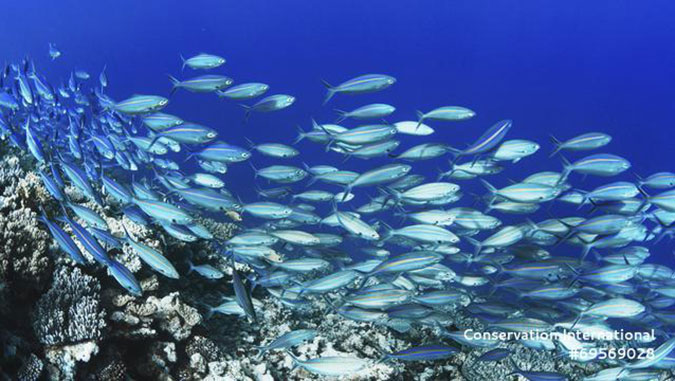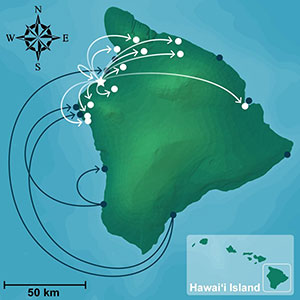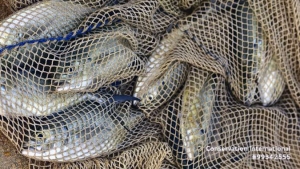
The life cycles of ocean fishes-from spawning to a consumer's dinner plate-off Hawaiʻi Island have been documented for the first time, providing key insight into management and conservation of the surrounding waters. The study led by University of Hawaiʻi at Mānoa researchers brought together experts from the fields of oceanography, genetics, ecology, fisheries biology and social sciences to develop unprecedented insights into the natural and commercial flow of fish.
"We believe that Fish Flow analyses will promote sustainable fisheries management and marine conservation efforts, and may foster public knowledge, wise seafood choices, and appreciation of social-ecological interconnections involving fisheries," said Mark Hixon, lead author of the study and professor and Hsiao Endowed Chair of Marine Biology at the UH Mānoa School of Life Sciences.
Most ocean species that are exploited by humans live in "stocks," or groups of isolated local populations, which have proven difficult to delineate and study.
Hawaiʻi Island Fish Flow map

Hixon and co-authors from the UH Mānoa School of Ocean and Earth Science and Technology (SOEST) and Conservation International combined their expertise and applied recent breakthroughs in their respective fields to develop the first Fish Flow map on Hawaiʻi Island.
Their findings indicate that the northern and southern portions of the island are intricately linked by larval dispersal and catch distribution, a discovery that highlights the importance of an inclusive approach to management and conservation of coral reefs in the region.
"From a fisheries management perspective, our work shows that the resource base for these fisheries is vital for the food security of local communities, which further emphasizes the importance of community-based fishery management," said Jack Kittinger, study co-author and director of Conservation International Hawaiʻi.
At the frontiers of 5 disciplines
Researchers working at the frontier of their respective diverse disciplines were needed for this study.
SOEST oceanographers rely on cutting-edge computer models that take into account biological and physical factors in ever higher resolution, allowing researchers to predict patterns of larval dispersal. Additionally, using advanced genomic techniques, tiny tissue samples from fish now reveal the spawning and settlement locations of adult fish and their offspring.
"The development of Fish Flow maps will better inform consumers and assist resource managers in linking fisheries and conservation policies with natural borders and pathways, including stock boundaries, networks of marine protected areas, and fisheries management areas," said Hixon.

"These Fish Flow maps will help to ensure that everyone—from local community members to resource managers and policy makers—understand and appreciate how clearly connected and dependent humans are on seafood produced in various, and sometimes very distant, regions of the ocean," added Kittinger.
The researchers aim to secure funding for a full Fish Flow analysis of the ecologically and economically important fish species in Hawaiʻi. That effort is envisioned to culminate in web-based, interactive "Fish Flow" maps depicting the many connections and interdependencies between marine ecosystems and human communities.
Study co-authors include Hixon, Brian W. Bowen, Richard R. Coleman, Chelsie W. Counsell, Megan J. Donahue, Erik C. Franklin, John N. Kittinger, Margaret A. McManus and Robert J. Toonen. Funding for this study was provided by the Harold K.L. Castle Foundation.
This work is an example of UH Mānoa's goal of Excellence in Research: Advancing the Research and Creative Work Enterprise (PDF) and Building a Sustainable and Resilient Campus Environment: Within the Global Sustainability and Climate Resilience Movement (PDF), two of four goals identified in the 2015–25 Strategic Plan (PDF), updated in December 2020.






